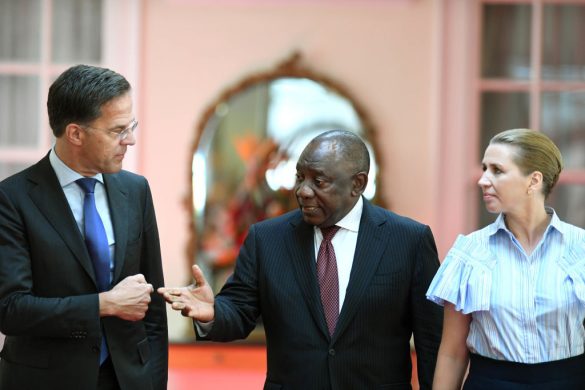Mange indbyggere i sudansk delstat er afhængige af humanitær bistand, fordi det flyder med landminer og ueksploderet ammunition på deres jord. Men minerne og ammunitionen gør det meget besværligt for hjælpearbejdere at komme frem.
KHARTOUM, 17 September (OCHA): Before severe fighting broke out between Government forces and the Sudan People’s Liberation Movement-North (SPLM-N) in April 2013, some 150,000 people lived in the Abu Kershola locality of Sudan’s South Kordofan state.
The fighting saw most people seek refuge in neighbouring North Kordofan. By late April 2014, as fighting eased, aid agencies received reports that close to 30,000 people had returned to their homes in Abu Kershola.
However, their hopes of swiftly regaining their former lives were short-lived.
Before the fighting, communities in Abu Kershola depended on agriculture. But now the fields lie untended, scarred by war.
“Much of Abu Kershola is contaminated by the explosive remnants of war (forkortet ERW, red.),” said Habibulhaq Javed, Chief Technical Adviser to the National Mine Action Centre. “The people have been prevented from moving freely in the area and resuming their livelihoods.”
Taking a deadly toll
With people unable to resume their livelihoods, most now depend on humanitarian assistance just to survive.
However, as is the case across much of South Kordofan, humanitarian agencies struggle to reach Abu Kershola. In many cases, the presence of ERW and unexploded ordnance prevents aid organizations from accessing vulnerable people in South Kordofan.
In February, a landmine blast in the Abu Jubaiha locality killed five people and injured 19. One of those killed and six of those injured were Sudanese Red Crescent Society (SRCS) workers. They were on their way to provide medical assistance to civilians who had been wounded in an attack on the town of Karida.
“It is a tragic and unacceptable fact that the majority of landmine victims are civilians,” said Merikha Al Daw, Head of the SRCS South Kordofan branch. “It is also unacceptable that aid workers face the real threat of injury or death from these devices as they carry out their work. More must be done to rid South Kordofan and Blue Nile states of this scourge.”
According to Al Daw, attacks like these have caused many Red Crescent volunteers to express reluctance about visiting places such as Abu Jubaiha and Abu Kershola.
Beyond reach
Since the conflict began in South Kordofan and Blue Nile, insecurity and warring parties’ inability to agree on modalities of cross-line assistance have meant that the UN and its humanitarian partners have not been able to access many people in need.
The mine-action sector has been particularly affected by these restrictions.
“There have been no mine-survey or clearance operations in South Kordofan state since 2011,” said Sarah Kalel, the Sudan Mine Action Programme Coordinator.
“This means that school children, farmers and aid workers continue to be exposed to very preventable risks as they go about their daily lives.”
There has been a gradual lifting of restrictions on the activities of the mine-action sector since July 2013, but mine-action interventions in South Kordofan have largely been limited to awareness campaigns and mine-risk education led by national partners.
“Unfortunately the difficulties faced by the mine-action sector mirror the wider challenges faced by the rest of the humanitarian community in South Kordofan and Blue Nile states,” said Ivo Freijsen, the Head of OCHA’s Sudan office.
He added: “Some reports estimate that nearly 1 million people have been displaced or severely affected by conflict in SPLM-N-held areas of South Kordofan and Blue Nile and are unable to receive humanitarian assistance from within Sudan. Not only does this lack of access deny people their basic right to humanitarian aid, but it also means that people will continue to be exposed to entirely preventable suffering.”















